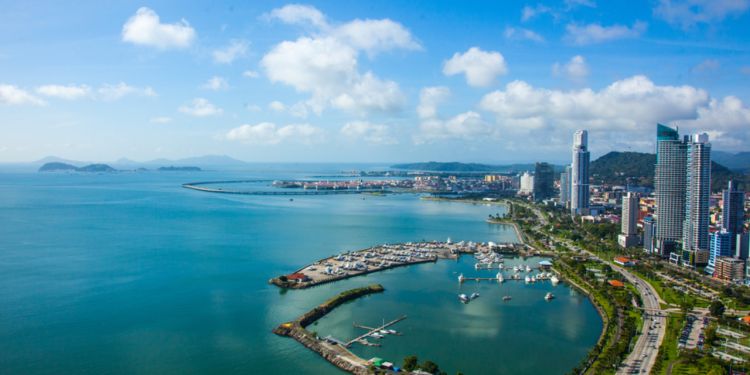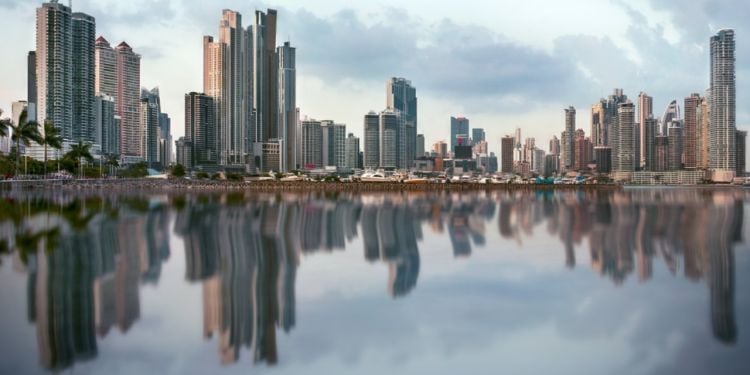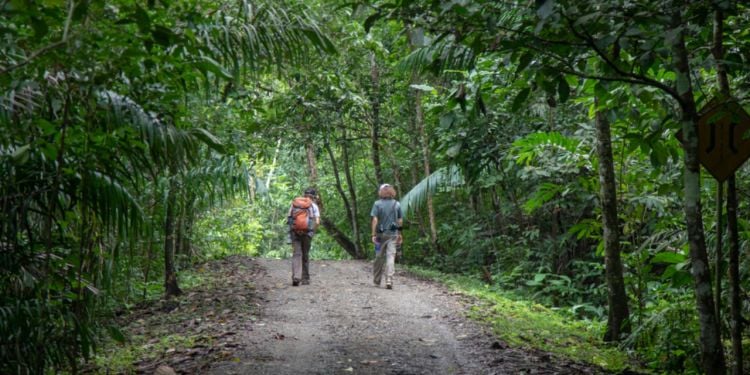Living in Panama: the ultimate expat guide
Everything you need to know for a successful life in Panama.
Home of the Canal bearing the same name, Panama may be your next expat destination. Foreign retirees have already settled in the country, enjoying its climate and lifestyle.
Expats looking for career prospects would need to master Spanish, unless they want to teach English as a foreign language. International companies settled in the country can also be interesting job leads if you want to work here.
Panama is a blend of stunning landscapes and strategic significance, making it an expat hotspot. Nestled at the crossroads of the Americas, Panama is more than its renowned Canal — it's a gateway to diverse cultural experiences and economic opportunities, attracting tourists, expats and businesspeople from all over the world. This guide covers everything from its geography and political structure to its lifestyle and tourism. Get ready for your adventure in this unique country!
Geography of Panama
Despite its small size, this land of 75,000 km² has an impressive geographical variety. Mountains, volcanoes, lush rainforests, rivers and pristine beaches form its diverse landscapes.
This narrow strip of land is a bridge between North and South America. The waters of two oceans—the Pacific and the Atlantic— wash over its shores. On clear days, it is possible to see both oceans from Panama's highest peak, Volcan Baru. The Isthmus of Panama, connecting the Pacific Ocean and the Caribbean Sea, is only 80 km at its narrowest point.
The state borders Colombia to the southeast and Costa Rica to the west. There is no direct road with Colombia due to the Darien Gap, a 100 km stretch of impassable terrain that breaks the Panamerican Highway. Air and sea are the only ways to travel between the two countries.
One of Panama's most iconic features is the Panama Canal. This artificial waterway cuts through the Isthmus of Panama, allowing ships to pass between the two oceans. The importance of this passage to international trade is hard to overestimate.
Panama, one of the most biodiverse places in the world, is a prime destination for ecotourism. As part of the Mesoamerican Biological Corridor, it has allowed a blend of species between American continents. It is the habitat of over 10,000 species of plants, more than 1,000 species of birds, and over 200 amphibian and 200 mammal species.
Climate of Panama
Panama's climate is hot and humid, with two distinct seasons. The rainy season (locals call it “winter”) runs from May to November. The dry season (“summer”) is from December to April. The seasons used to be well-defined, but climate change has increased unpredictability. In some years, summer starts later; winter is too dry in others. The average temperatures fluctuate between 25°C and 31°C and vary by region. Climate variability here depends on El Niño and La Niña phenomena, tropical cyclones and sea surface temperatures. It's worth noting that storms and hurricanes tend to pass by without causing much destruction, unlike in Mexico, Florida and some Caribbean Islands.
Demographics of Panama
In 2024, Panama's population was just over 4,5 million, with a high concentration of expatriates in certain regions. 70% of the population lives in urban areas, particularly in Panama City, the capital. The remaining 30% is rural.
The country is home to a variety of ethnic groups: mestizos (mixed Indigenous and European), Afro-Panamanians, Indigenous groups and communities of Chinese and European origin.
Recent progress in the education system has led to a literacy rate of around 95%. Still, marked disparities exist between urban and rural populations, with the latter often lacking access to quality education.
The culture, customs and language here are predominantly Caribbean Spanish. The country's official language is Spanish, but English is widely used in business and tourism. Although most Panamanians are friendly and accustomed to foreigners, many locals don't speak English. So, knowing some Spanish makes navigating life here easier.
Panama's Constitution provides for freedom of religion. Most Panamanians are Catholics as a result of centuries of Spanish colonial influence. Other religious groups, such as Protestant, Jewish, Bahá'í, Muslim and Hindu, are also represented here.
Economy of Panama
Panama has a well-developed economy, one of the strongest in Central America. The Panama Canal is the cornerstone of the country's financial well-being. The Canal remained operational during the pandemic despite disruptions in global trade and shipping. It was the factor that kept the country afloat. Over 14,000 ships from around the world pass through the Panama Canal annually.
Panama is also a regional financial hub. The finance sector plays a significant role in the economy. The country used to have a reputation as a “fiscal paradise,” which brought an influx of capital from other parts of the world. However, a major turn occurred after the globally covered Panama Papers scandal. Panamanian authorities have tightened banking regulations to increase transparency and combat money laundering. As a result, Panama was excluded from the Financial Action Task Force's grey list in 2023.
Construction is another key sector, though it has experienced a slight decline in recent years. The real estate market also faced a downtrend but has already stabilized.
Tourism is an expanding industry that contributes to GDP and job creation. Panama is also a strong player in global commerce, thanks to the Canal and the country's tax-free zones and tax incentives. Agricultural production is mainly for local consumption. The main exports include bananas, coffee and sugar.
Gold and copper industries are vital for Panama's economic growth. Although, gold mining is not as extensive as in other parts of Latin America. Copper used to account for a substantial part of GDP and the labor market. However, the recent closure of the major copper mine caused economic and societal turmoil.
Panama has a dollarized economy. The U.S. dollar represents all banknotes in circulation. The coins of the Panamanian balboa are used alongside their similarly sized U.S. counterparts.
Political structure in Panama
Panama is a constitutional republic with a presidential system. The president is elected for a five-year term and is the head of state and government. The government consists of three branches: executive, legislative and judicial. The president, vice president and state ministers represent executive power. Legislative power is the responsibility of the National Assembly. The judiciary is independent of both the executive and the legislature.
Panamanians aged 18 and older are eligible to vote. Since the end of the Noriega dictatorship in 1989, Panama has enjoyed relatively high political stability compared to neighboring countries.
Tourism in Panama
Tourism is a booming sector in Panama. Visitors from around the globe come to this small but lovely place. Whether it's the Panama Canal, the vibrant Panama City, or stunning nature and diverse wildlife, this place has allure for every traveler.
Panama City, with its two million inhabitants, is a blend of old and new. Casco Viejo, or the historic Old Town, is a UNESCO World Heritage site. It's known for its colonial buildings and cobblestone streets. Restaurants, cafés, shops and markets are on every corner of this charming area. The Old Town is home to the National Theatre and several museums. Just a short walk away, the high-rise skyline of Panama City reflects the country's growing economy. A walk in Cinta Costera, a seaside promenade, offers a view of both the skyscrapers and colonial architecture. The Archaeological Site of Panamá Viejo is another World Heritage site. Occasionally, it hosts concerts and performances. The Biomuseo, honoring Panama's biodiversity, is a vibrant structure designed by the famous architect Frank Gehry. The museum is on the Amador Causeway, a picturesque waterfront promenade popular for walking, cycling, or dining at one of its numerous restaurants.
The Panama Canal is one of the most popular tourist attractions. Visitors can observe ships pass through the locks while dining at the Canal's restaurant, Miraflores. To connect with nature, Gatun Lake and Soberania National Park are nearby.
The picture-perfect San Blas Archipelago consists of 365 islands in the Caribbean Sea. The archipelago is home to the Guna indigenous community. While a few islands are densely populated, most are uninhabited. White sand beaches, palm trees and turquoise waters make this place a paradise on Earth.
Another hotspot is the Bocas del Toro Archipelago near the Costa Rican border. Nestled in the Caribbean with its rich marine life, this place attracts surfers, divers and snorkeling enthusiasts. A multinational expat community calls this place home.
The Azuero Peninsula, particularly Venao Beach, is another favorite expat spot. Known for great surfing and music festivals, this beach town draws younger crowds.
For fresh air and a laid-back atmosphere, Boquete is the perfect choice. This coffee haven is known for producing the most expensive coffee in the world (USD 13,518 per kg in a 2024 auction). Surrounded by lush mountains and cloud forests, the town offers many opportunities for outdoor fun.
The Pearl Islands, a popular weekend destination, are just 1.5 hours by ferry from Panama City. The most visited island, Contadora, features luxury mansions and spectacular beaches.
Panama's natural reserves and parks are ideal for ecotourism. Darien National Park, a UNESCO World Heritage site, is one of the most biodiverse places on the planet. Some areas may be dangerous, so careful planning is essential. To explore Darien's rainforests and wildlife, hire a local guide.
Boca Chica, a small coastal town, is a gateway to the Gulf of Chiriquí National Marine Park. Its aquamarine waters, home to unique ecosystems, will make you forget you're in the Pacific.
Coiba National Park, another UNESCO World Heritage site, is renowned for its biodiversity. Loved by divers, the park is home to many marine species, including dolphins, whales, orcas, sharks, manta rays and sea turtles. Coiba Island is also a habitat for many mammal, bird and amphibian species.
Panama's tourism infrastructure is well-developed, catering to travelers of all tastes and budgets. Accommodations range from luxury resorts and boutique hotels to eco-lodges and hostels.
Tocumen International Airport connects Panama to the rest of the world, while several regional airports serve other parts of the country. Highways and roads provide convenient access to any spot, even the most remote, but some are notorious for their poor condition. Organized tours are a great way to explore this tropical gem.
Culture in Panama
Panama is a crossroads of the Americas, with its indigenous, African, and Spanish heritage. The influence of other communities, such as Jewish, Chinese, Arab and American, is also apparent. This diversity is evident in local cuisine, music and art.
One of the main symbols of Panamanian culture is the pollera, a cotton or wool dress decorated with embroidered or lace floral designs. It is often complemented with gold jewelry on the head, ears, neck and chest, as well as the hat known as Tembleque.
The mola is a form of traditional textile art created by the Guna people of Panama. These textiles are sewn into panels with complex designs and multiple layers. The vibrant, colorful patterns often reflect elements of nature, such as birds, fish, flowers and more.
The Panamanian hat is an artisan product favored by people in the provinces. Made of natural fibers, these hats come in various colors and designs.
The country hosts several annual international events. The Panama Jazz Festival, with its trajectory of 20 years, takes place in January and brings together local and foreign jazz artists. Prisma, an international contemporary dance festival held in October, is a true celebration of the human body's expressivity. The dates of the International Film Festival (IFF) in Panama vary. This event, which celebrated its 12th year in 2024, is primarily dedicated to Iberoamerican cinema, though other countries also present their films at the festival.
Healthcare in Panama
Panama is a hub for medical tourism. Panama City offers some of the best facilities in the region. Its clinics are equipped with state-of-the-art technology, and many doctors are trained both locally and abroad. Additionally, a significant number of medical professionals are bilingual.
Most locals rely on Social Security Fund clinics providing free medical services. Shortages of prescription medications and long appointment waiting times are typical for these establishments. The majority of expats prefer private healthcare. Local insurance premiums are low compared to the US, and Americans enjoy reduced expenses here. However, Panama's healthcare cost is expensive compared to many European countries where residents and citizens can receive excellent free care.
Career opportunities in Panama
Panama offers diverse career opportunities across multiple sectors. Thanks to the Panama Canal, the shipping and logistics industries are highly developed. The country's free trade zones and multinational corporations headquarters attract skilled professionals in manufacturing, engineering, banking and international trade. Additionally, the tech and innovation sectors are expanding. Tourism also provides a wealth of employment prospects. Bilingual workers fluent in Spanish and English are in demand.
Getting around Panama
Panama has a well-developed transport infrastructure. Tocumen International Airport is a regional hub, serving routes to North, South and Central America, as well as Europe and Turkey. Additionally, several local airports operate throughout the country.
The Interamericana Highway runs across Panama, with some sections in excellent condition and others riddled with potholes. Panama City features a metro and bus system, and long-distance bus services are also available. Taxis are pretty inexpensive in this country; similarly, Uber is much cheaper than in many parts of the world. The latter is a more reliable option.
Cost of living in Panama
The cost of living in Panama depends on lifestyle and location. The country used to be a cheap haven attracting expats from around the globe thanks to its favorable price-to-quality ratio. However, those days are gone. Living in Panama is still affordable compared to many Western countries, but the comparison no longer always favors this country.
Housing costs range from inexpensive options in the provinces to higher prices in the central neighborhoods of the capital. In upscale areas, living costs can exceed those in some places in Europe. The average purchase price per square meter in the city center is approximately $2,500, while it drops to around $1,600 outside the center. Renting a one-bedroom apartment in central urban areas typically costs around $1,000. Groceries are not cheap either. While 15 years ago, $100 could fill a shopping cart, today, the same amount might leave you with a couple of medium-sized bags. Utilities are moderately priced, although the hot tropical climate can lead to hefty air conditioning expenses. Essential services like electricity, water and rubbish removal can add $120 to the monthly cost of an 85m² apartment. Ground transportation is budget-friendly. A bus ride in Panama costs $0.25 per trip, while the metro costs $0.35 or $0.50 per ride, depending on the line. Airfares in and out of Panama are pricey compared to flights within Europe. Dining out depends on the taste and budget. Many affordable options are available. Still, the prices in high-end restaurants are comparable to those in Europe but remain lower than in the US. If you want a great meal with wine, expect to pay over $80 per person in such restaurants.
Generalities
Get an overview of living in Panama with general information to discover the destination.
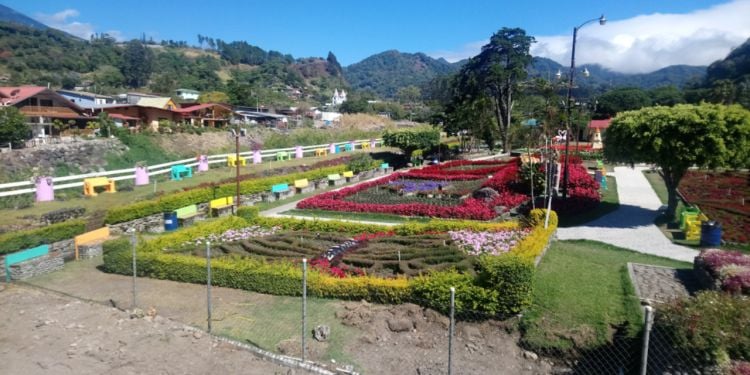
Boquete: A haven for investors and retirees in Panama
Welcome to Boquete, a charming small town in Panama's cool highlands. Renowned for its world-class coffee, stunning landscapes and a vibrant expat ...
Formalities
Find out more on visas, passports and entry requirements to travel to Panama.
Visas
All you need to know on work visas, work permits, working holiday visas and residence permits to live and work in Panama.

Visas for Panama
Panama is a tropical gem with welcoming immigration policies. A variety of residency options exist ...

Professional visas in Panama
To work in Panama, foreigners must obtain an appropriate visa and a work permit. The country ...

Investing in Panama
Considering moving to Panama? This country offers more than just a strategic location and a ...
Work
Dive into the Panama labour market, legal framework and tips on how to find a job in Panama.
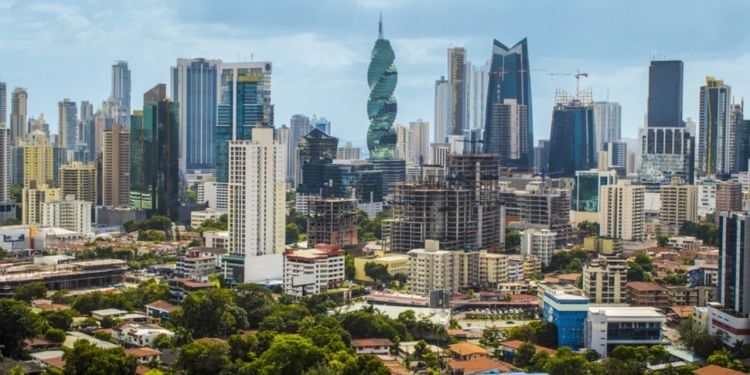
Working in Panama
Searching for a job abroad can be overwhelming. The absence of connections in the new business ...

Setting up a business in Panama
Panama has long been a hub for international businesses. The country's strategic location, ...

Panama's labor market
Panama's labor market is rebounding from the pandemic lows. This article examines the ...
Accommodation
Explore real estate or temporary rentals in Panama. Find out more about renting or buying a house or a flat, real estate agents, leases and rental agreements.
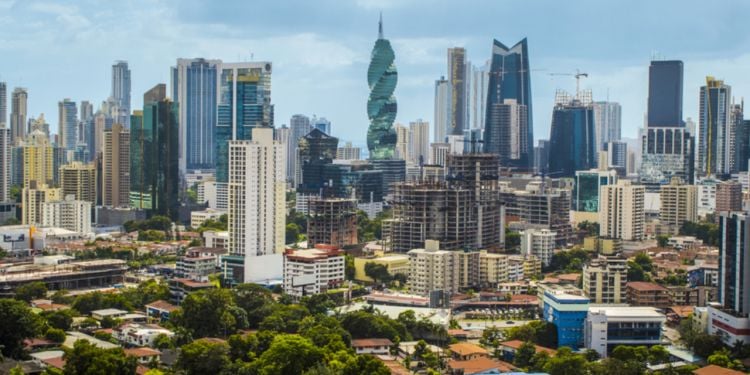
Accommodation in Panama
Finding the right place to live is one of the most important decisions for anyone moving abroad. ...
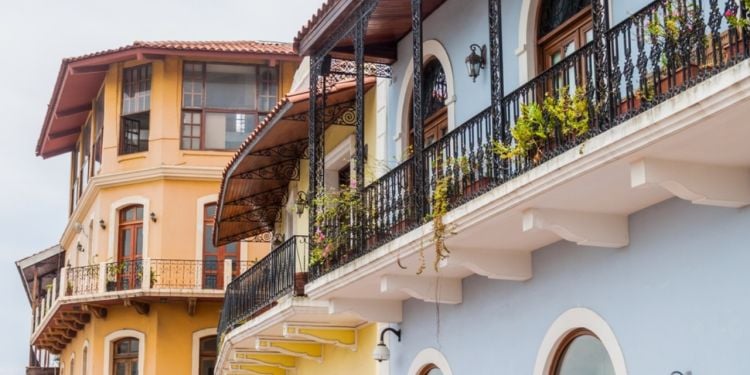
Real estate in Panama
Panama's real estate sector has long been a cornerstone of the country's economy. With its ...

Find your ideal home in Panama
Explore real estate listings in Panama to buy or rent your next home.
Study
Universities, training courses, student visas, registration procedures: all you need to know about being an international student in Panama.
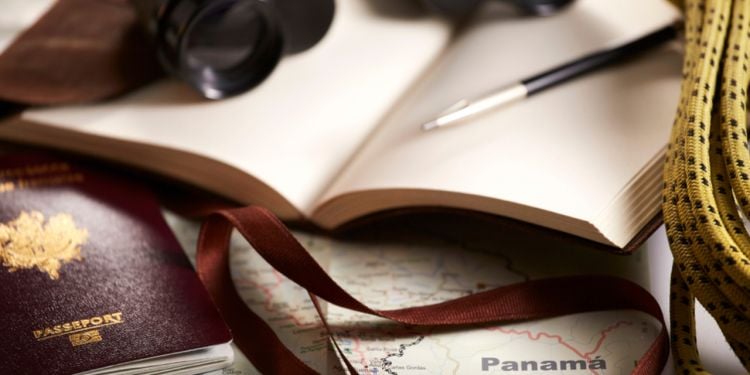
Studying in Panama
Panama is an appealing destination for international students. Its mix of affordable public universities and specialized private ...
Health care
Understanding the healthcare system in Panama: public and private health system, health insurance...
Bank
Navigate the banking system in Panama: how to choose a bank and open a bank account.
Tax
All you need to know about income tax, the tax system and filing your taxes as an expat in Panama.

Tax in Panama
Panama has a reputation as a tax-friendly jurisdiction, offering a range of benefits for expats and foreign investors. Understanding the structure ...
Transport
From public transports to renting or buying a car, explore the best options to getting around in Panama.
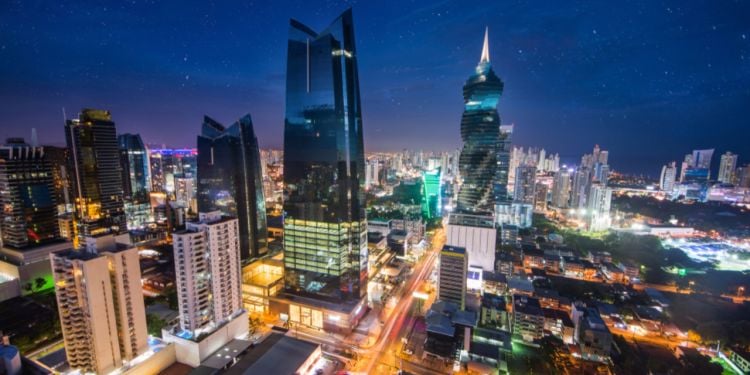
Getting around Panama
Panama is a regional hub at the crossroads of the Americas. From well-maintained highways to pothole-ridden backroads and from buses to planes, ...
Driving
Essential information on driving requirements in Panama, driver's license exchange and international permits.

Driving in Panama
Driving in Panama is an excellent opportunity to explore this tropical country at your own pace. Although the roads and local driving habits may ...
Removal
Moving to Panama? Find useful information and tips to organize your move.

Moving to Panama
Moving abroad can be as easy as grabbing a few suitcases or as complex as transporting half a ...

Moving to Panama with your pet
Bringing a pet to Panama requires careful planning. You must provide specific documentation and ...

Free quotes for your move
Get the best offers to easily organize your relocation to Panama.
Communications
Internet and phone providers, plans, and everything you need to stay connected in Panama.
Leisure
Sports, leisure, culture and other activities expats can enjoy in their spare time in Panama.
Everyday life
Eager to discover what life in Panama looks like? Here's a taste.

Childcare and schools in Panama
Panama offers various childcare options, including nannies, daycare centers and preschools. Expat families mostly rely on the private bilingual ...
Articles from the magazine
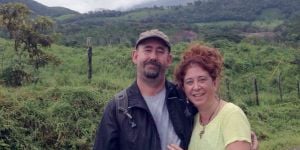
Holly in Boquete: "There's a very well developed, and extremely welcoming community of expats"
Californian expat, Holly moved to Boquete a few months ago. She researched with her husband the ideal place to settle for 7 years. They enjoy their new environment, spending a lot of time learning Spanish and making new friends.

Kris in David: "It's more relaxed, more laid back here"
Kris comes from the United States. Following several years in Florida, she decided to move to David with her husband. Retired nurse, she enjoys biking, drawing and painting, blogging and photography.

Along the Gringo Trail
We are Clyde and Terry Coles who took an early retirement and moved our lives to the country of Panama. Being able to retire at age 57 had been Clyde's dream for a long time, and even though I was just 51, I was willing to check out of the working world to join my husband on the adventure of a lifet
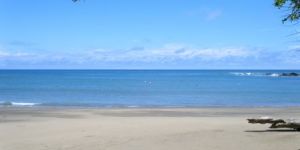
In da campo
My name is Karen Ann. I'm from Edmonton, Alberta, Canada. We spent about a year researching different countries before we decided on Panama.
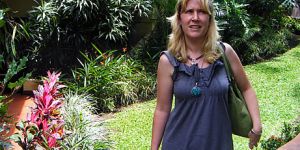
Panamajama's Blog
I am Panamajama, I come from Glasgow in the West of Scotland, part of the United Kingdom. I moved to Panama as my Civil Engineer husband was offered a job working on the Panama Canal Expansion project.
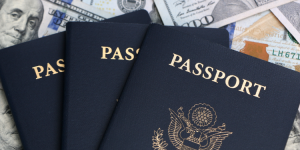
Countries that offer residence by investment
Many popular expat destinations have recently ended or restricted their Golden Visa programs, which were often criticized. However, several countries still use these programs to attract affluent foreigners. In 2025, what are the available investment programs? Can one immigrate with their family through these programs?

UK tax reform: How it affects expats
The British tax reform took effect on April 6, 2025. Notable changes include the elimination of the "non-domiciled" status and an overhaul of the inheritance tax system.

US travel restrictions: Essential tips for foreign residents
Should temporary and permanent residents be concerned? US Vice President J.D. Vance's recent remark that the privilege of staying in the United States isn't "unlimited" for green card holders has sparked widespread concern. With immigration laws becoming stricter following President Trump's re-election, even immigration experts are treading carefully. These stricter regulations impact both documented and undocumented immigrants.

